Whether I’m looking for the next peak to conquer or a scenic route to wander, I like to explore and fully evaluate my options. As a hiker, a climber, a biker, or even a paraglider, understanding the lay of the land before getting out there is key to being prepared.
With the Elevation Profile widget in ArcGIS Experience Builder, you can assess the intensity and technicality of a route by examining the elevation changes and choose suitable paths based on the desired challenge.
In the Rocky Mountain National Park Trails Viewer application below, selected trails from the list or on the map can be visualized with their elevation profile and statistics.
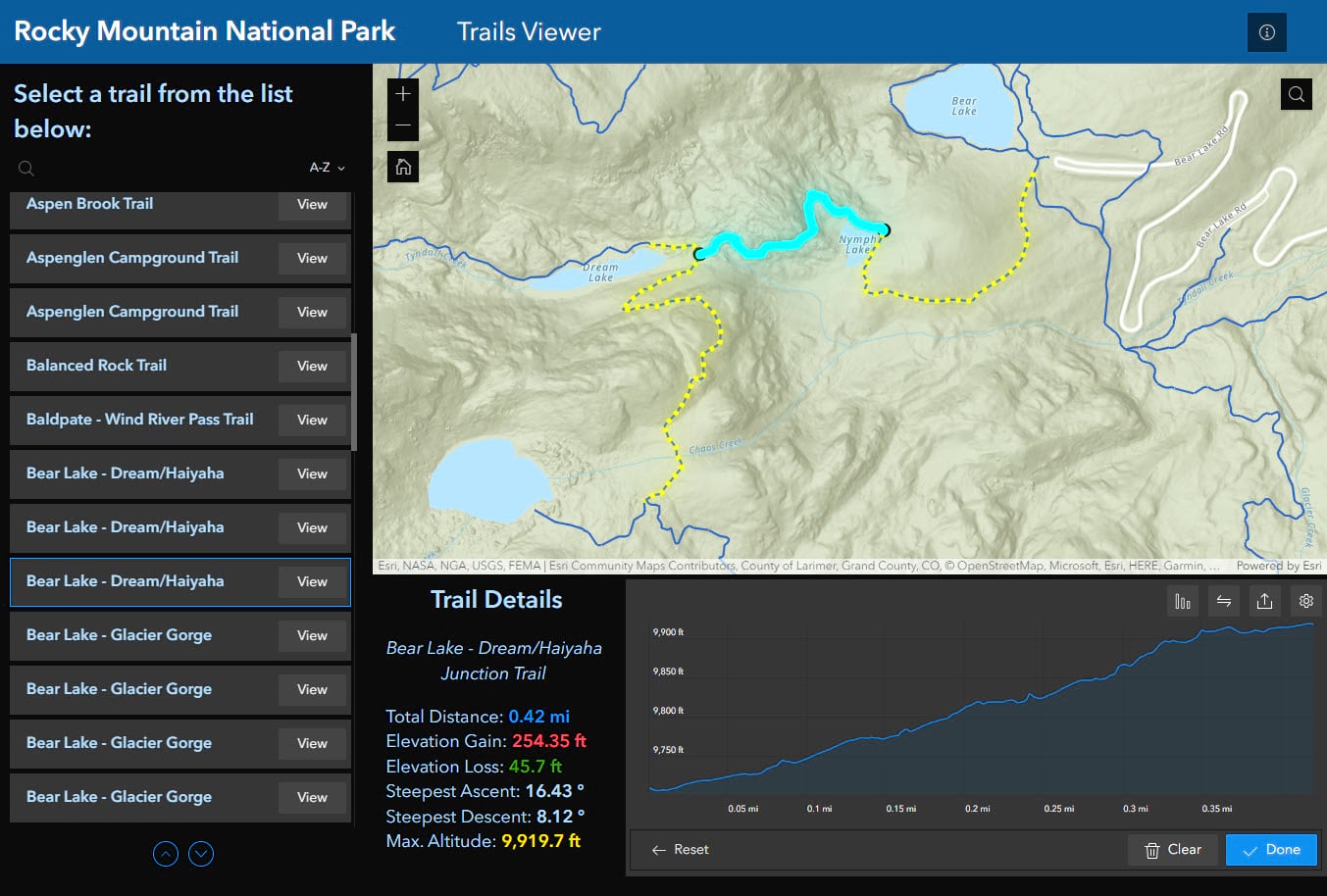
Leverage the next-selectable options and intersecting functionality to build your own paths and evaluate alternative routes.
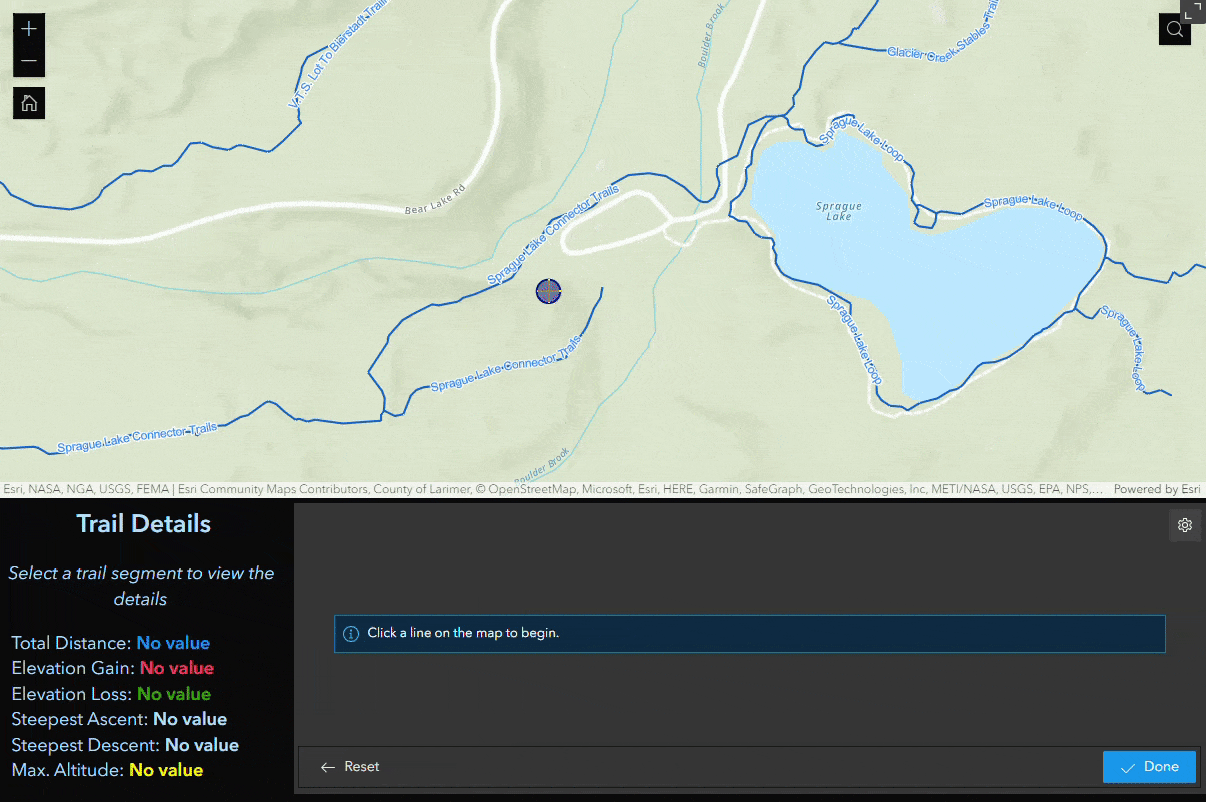
How to build a trail viewer app
Follow the steps below to create a basic trail viewer application. Feel free to further customize the layout, themes, and content for your own app. You will need an ArcGIS organizational account with privileges to create content.
Create a new application
- Use your own web map with trail data or use the Rocky Mountain National Park Service Trails map sample from the example above.
- From the web map item page, click Create Web App and choose Experience Builder.
- Find the Blank grid template and click Create.
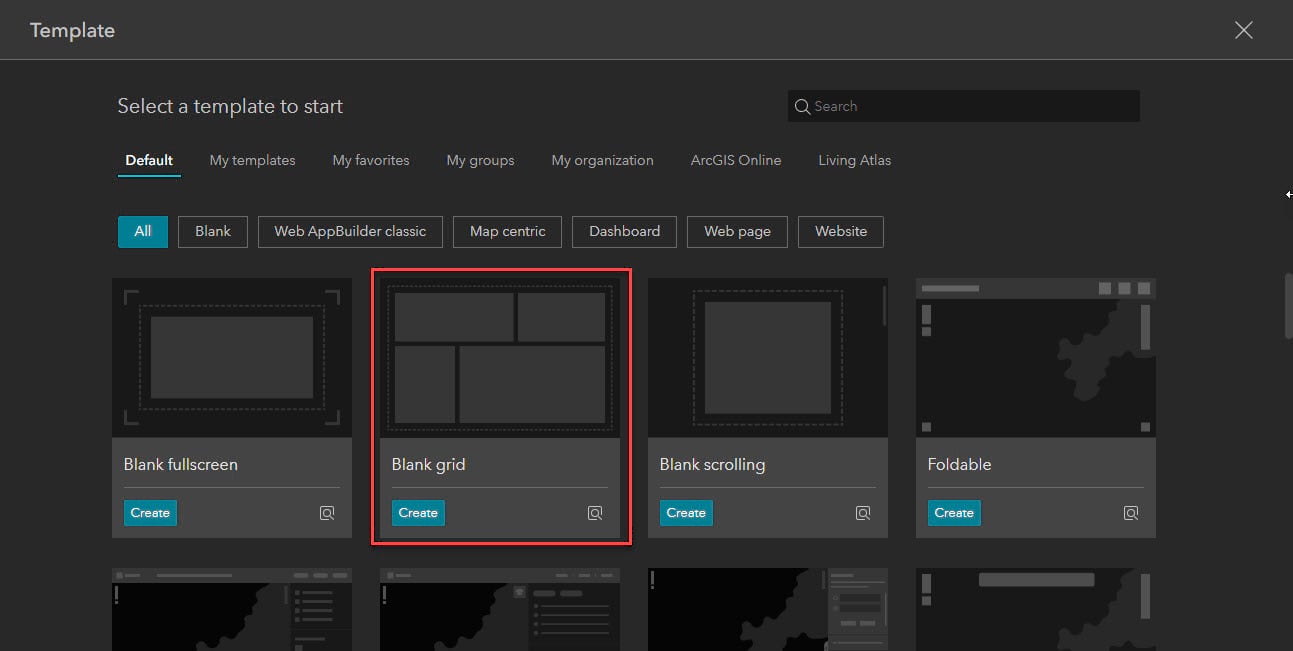
Configure elevation profiles for a layer
- From the Insert widget panel, find the Elevation profile widget and add it below the Map widget.
- Connect the Elevation Profile widget to the Map widget.
- Update the Map Settings to enable Selectable Layers. This will display the ground elevation profile when selecting lines on the map.
- Use the Live View mode to select a trail and view its elevation profile.
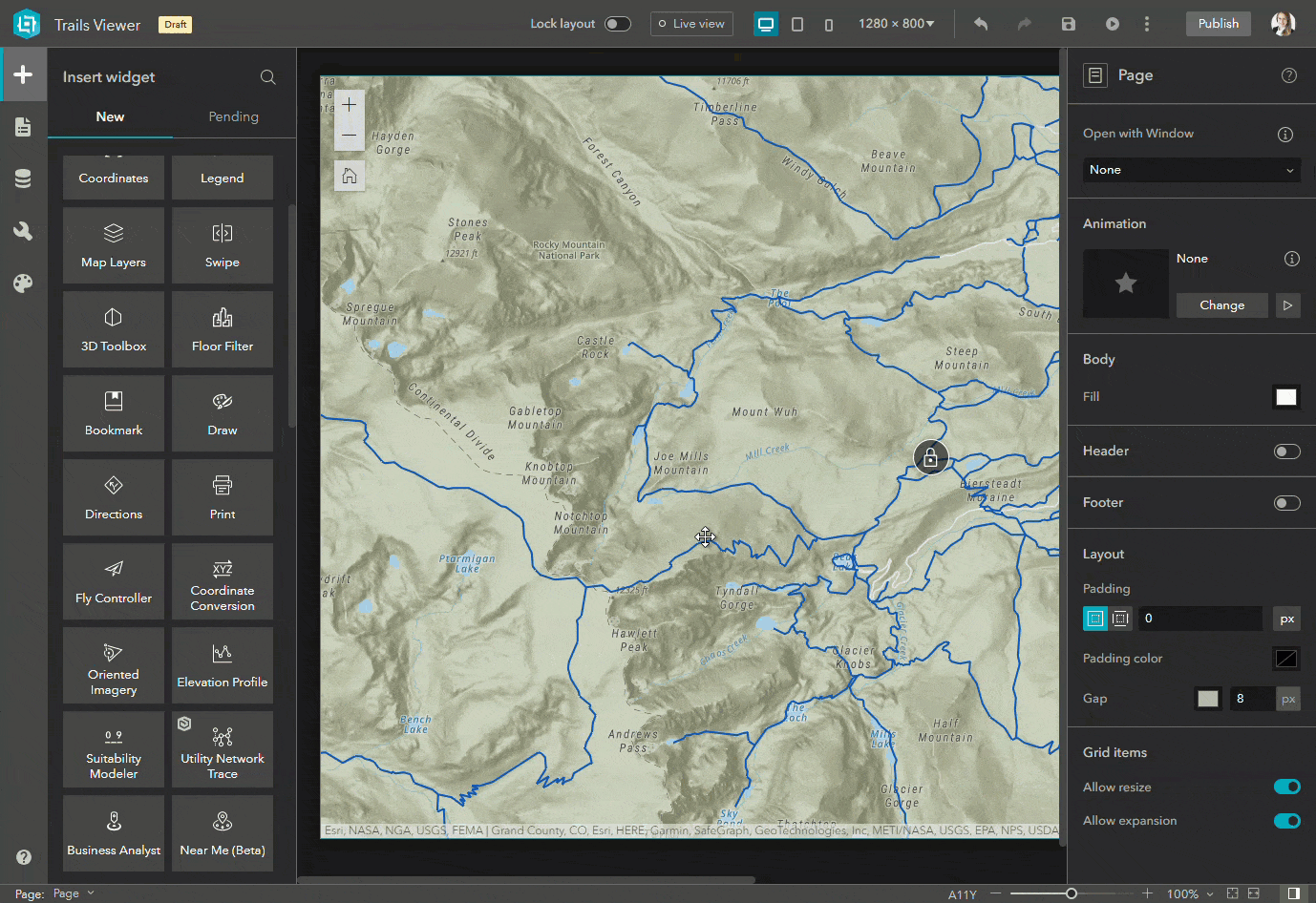
View intersecting trails along the profile
- Update the Map Settings to enable Intersecting Layers.
- Select a layer to intersect: this supports lines and points layers. For this example, select your trails layer.
- Choose a Display Field for the intersecting features displayed in the elevation profile graph.
- Optionally, make changes to the Style.
- Use the Live View mode to select a trail and see connected and intersecting trails.
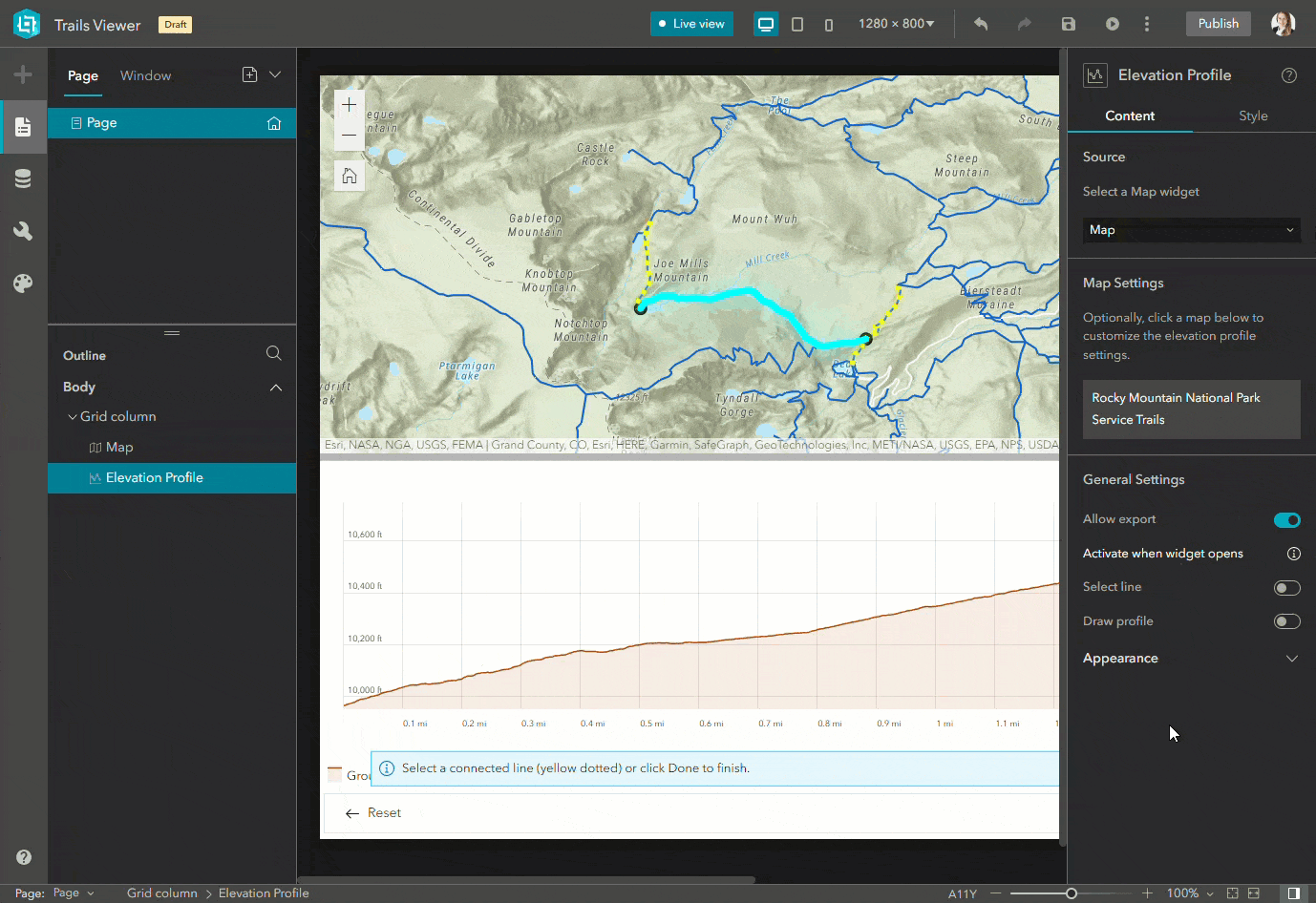
View profile statistics
Statistics for an elevation profile can be viewed from the Profile Statistics window.
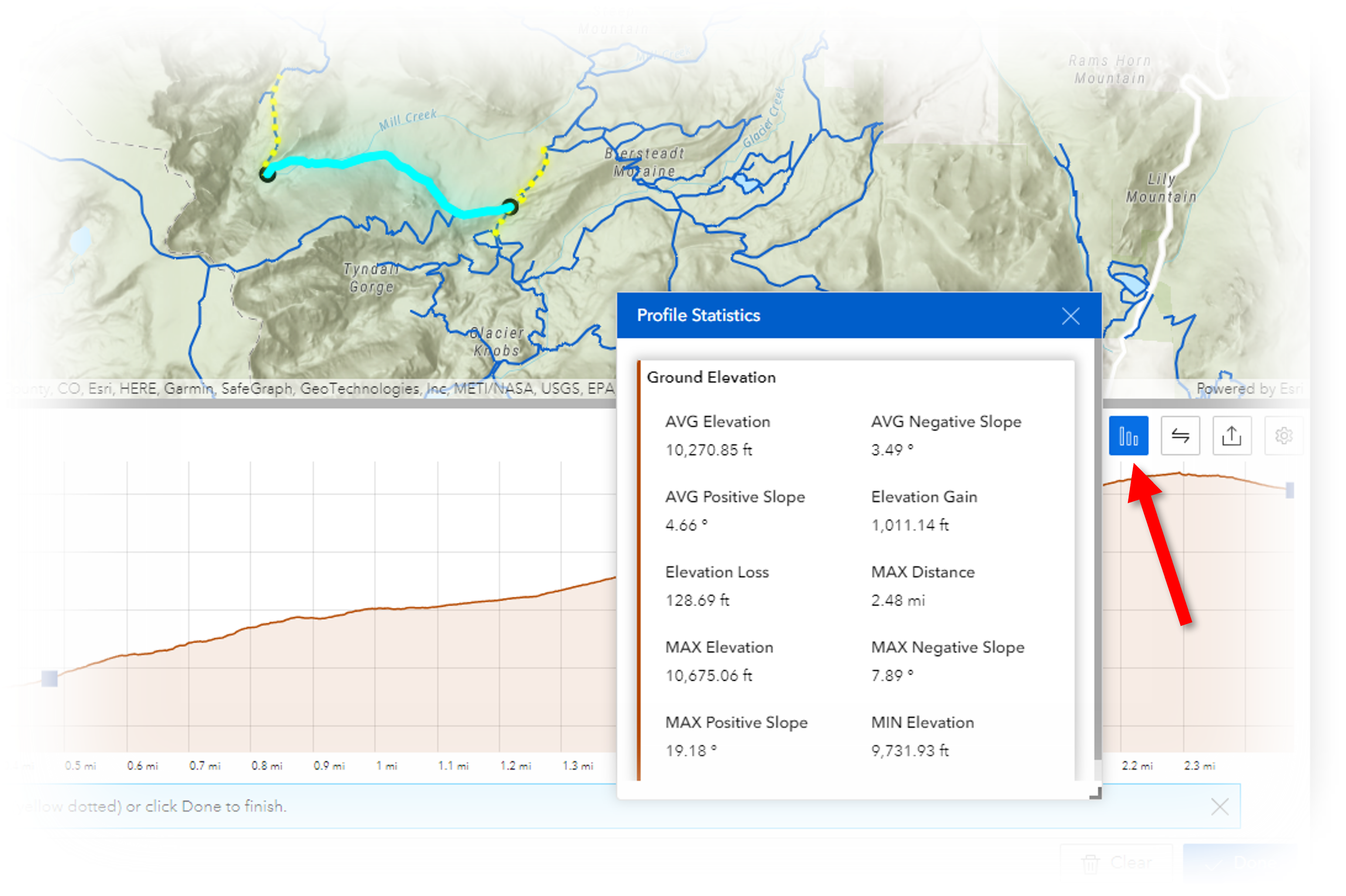
You can also use the output data source to customize the display of those statistics in the Text widget.
- From the Insert widget panel, find the Text widget and add it to the left of the Elevation Profile widget.
- Connect the Text widget to the Elevation Profile statistics output data source.
- Set dynamic content to show attributes from the Default Elevation Profile statistics.
- Type custom text and insert attributes to customize the display of the statistics.
- Use the Live View mode to select a trail and view statistics in the Text widget.
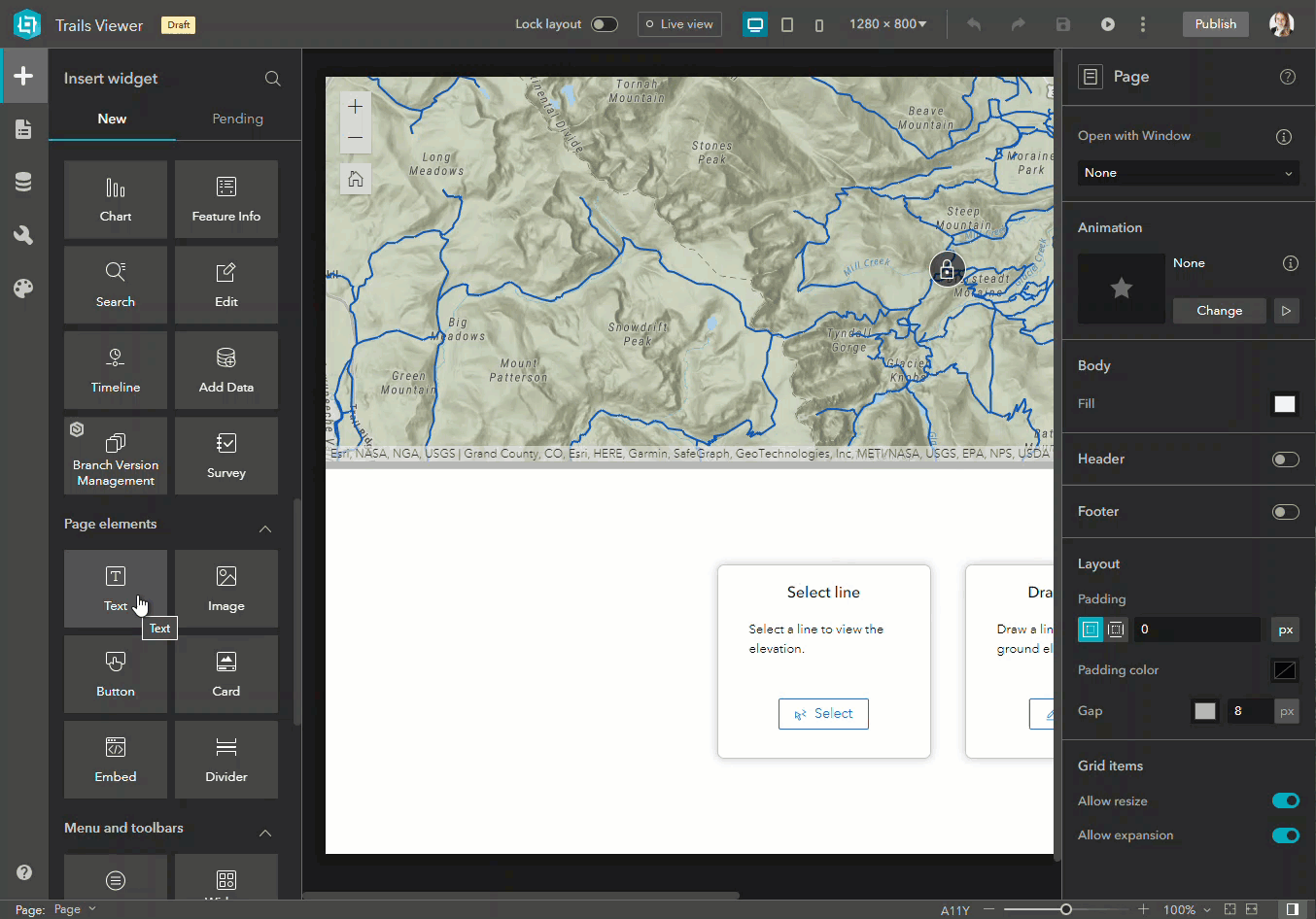
Display a list of trails
- From the Insert widget panel, find the List widget and add it to the left of the Map widget.
- Connect the List widget to the trails layer from the map.
- Configure the dynamic text content to show the Trail Name.
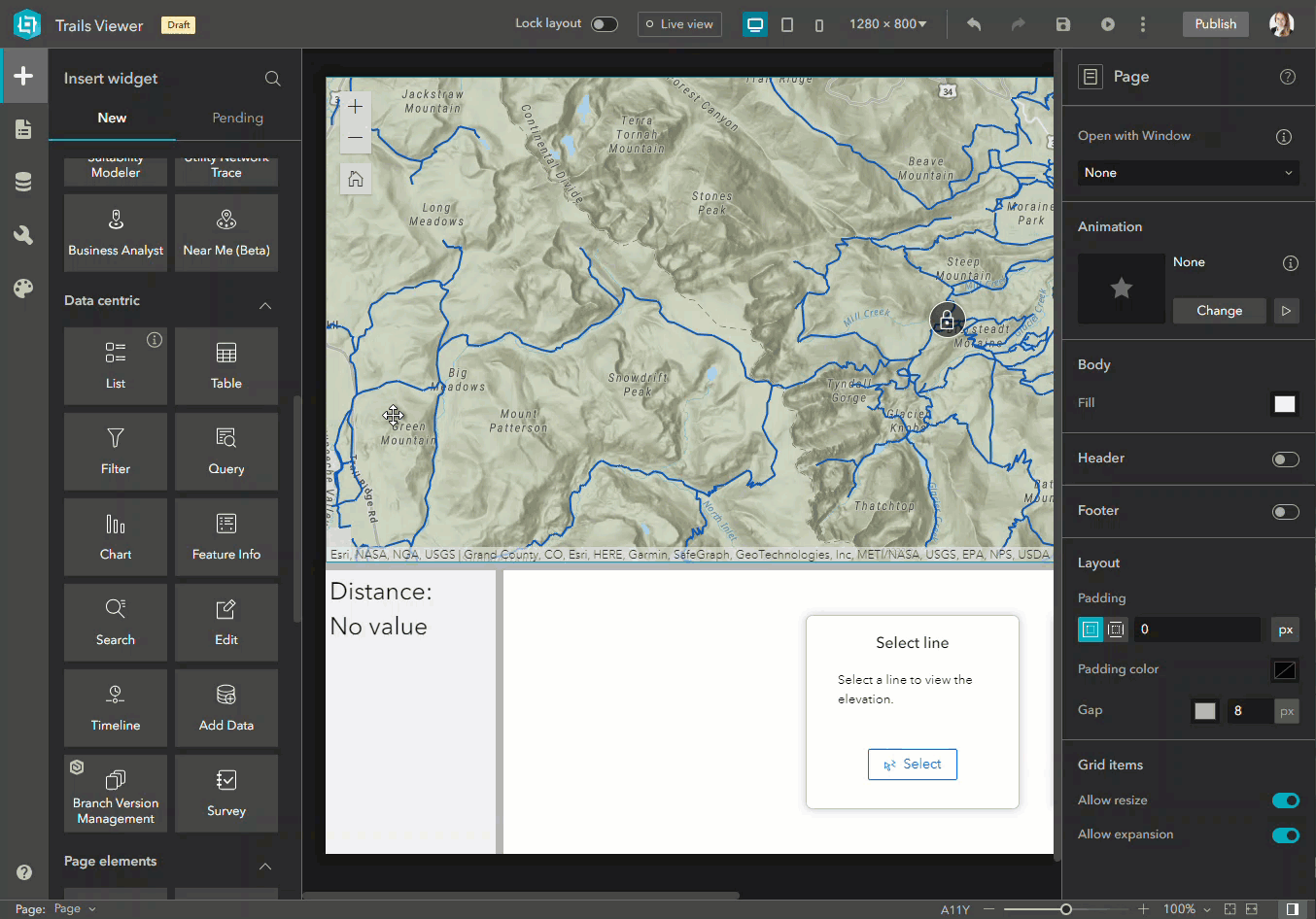
Next, configure actions in the List widget to view the elevation profile when a trail is selected:
- From the Action panel, under Message action, click Add a trigger and choose Record selection changes. Select the Elevation Profile widget as a target and set the action to Select line.
- Add another action and select the Map widget as the target. Set the action to Zoom to.
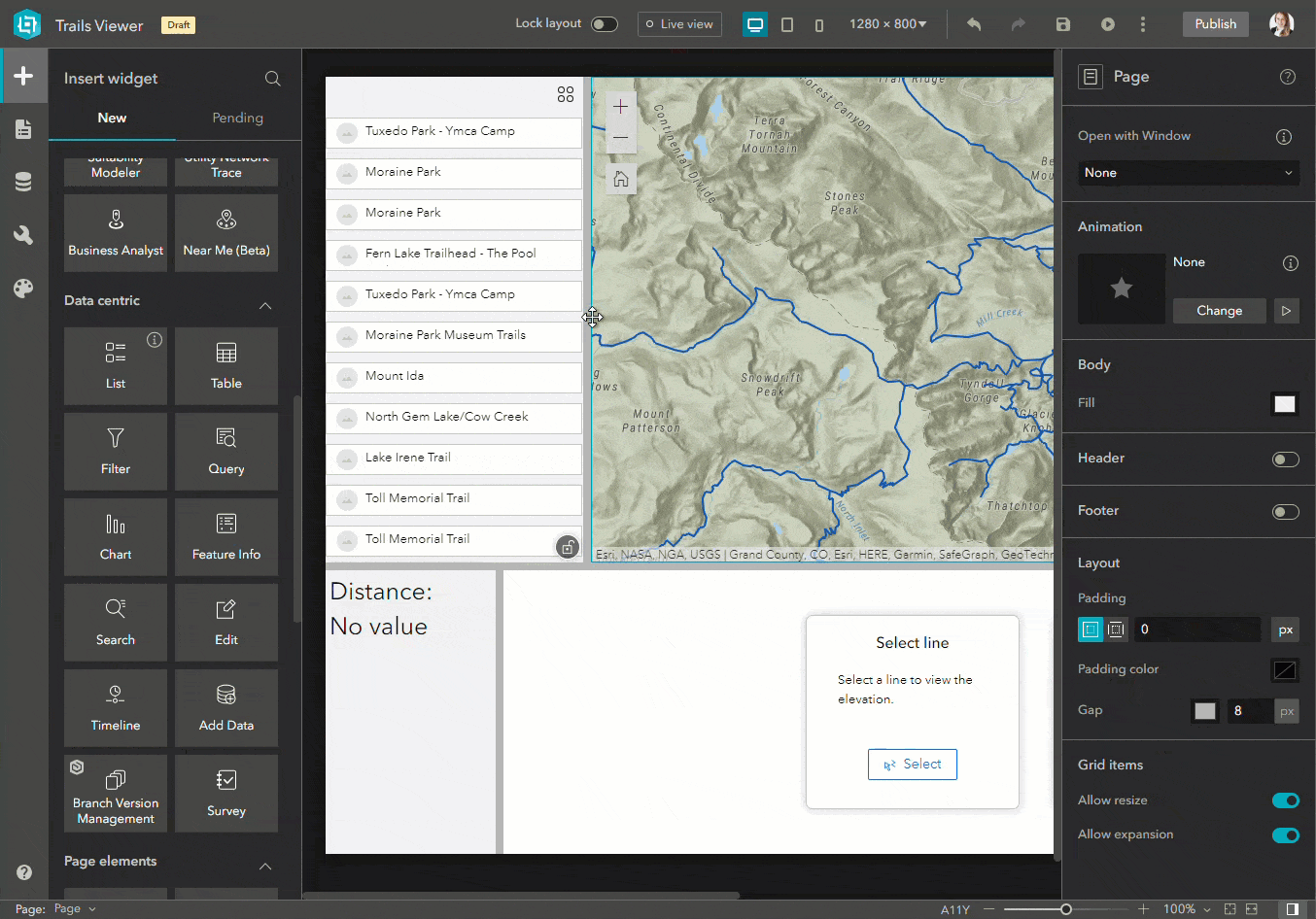
- Open the Preview and select a trail from the list to view its elevation profile.
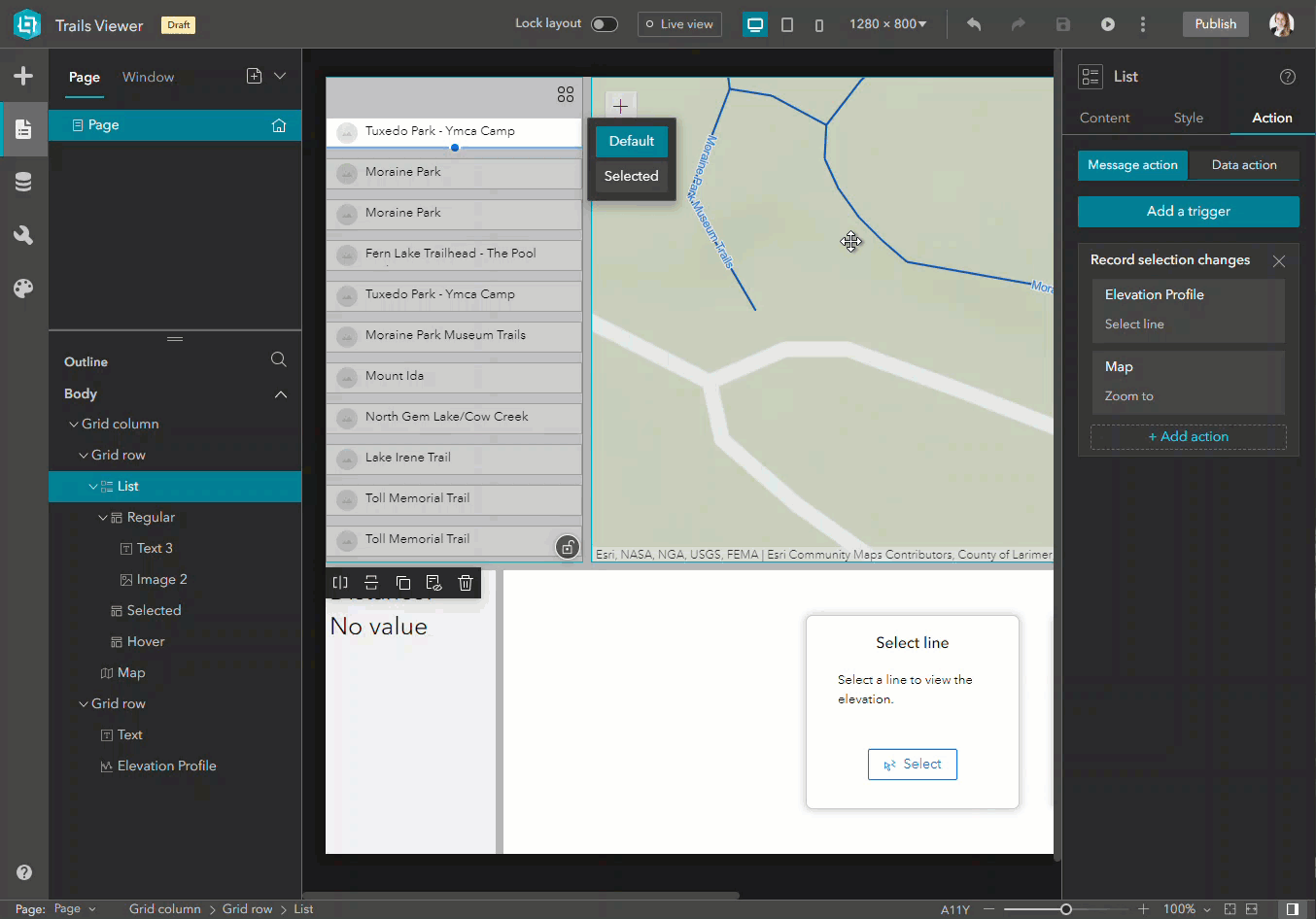
Further customize and prettify your application and share it with your friends to plan your next outdoor adventure!


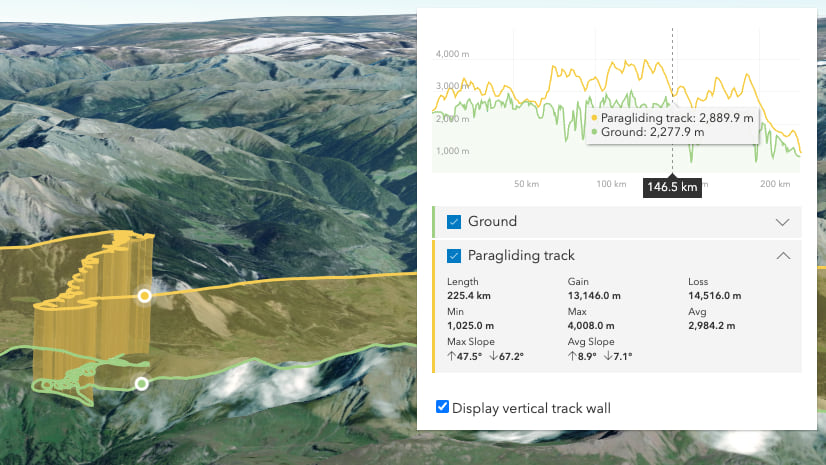
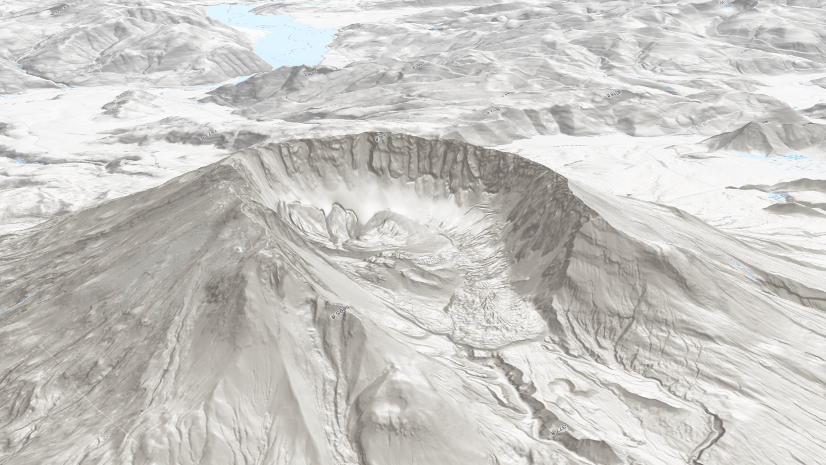

Commenting is not enabled for this article.